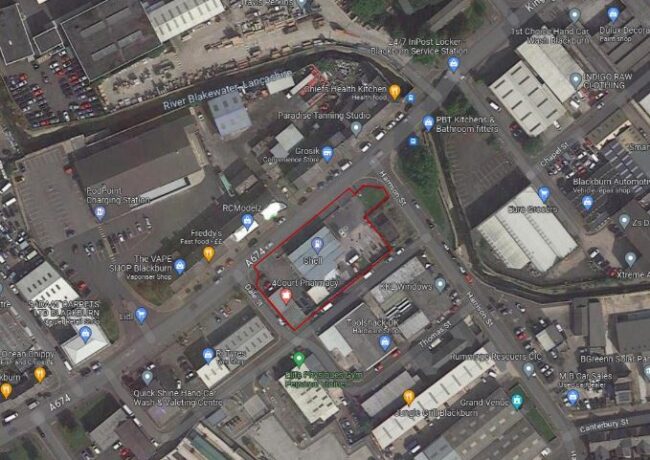The Subplot
The Subplot | Mersey movement, Levelling sideways
Welcome to The Subplot, your regular slice of commentary on the North West business and property market from Place North West’s analysis editor, David Thame.
THIS WEEK
- Wakey wakey: office developments in Birkenhead and Southport grab their chance while Liverpool’s office market snoozes
- Elevator pitch: your weekly rundown of who and what is going up, and who is heading the other way

LIVERPOOL’S NEW ARRIVALS
Wirral and Sefton grab their big chance
Liverpool’s office market is struggling to get off the canvas, giving Sefton and Wirral a once-in-a-decade opportunity. They are grabbing it.
For reasons too well known to need repeating, Liverpool is coming out of the pandemic with less acceleration and more uncertainty than Manchester or Birmingham (or pretty much anywhere else). According to Avison Young, take-up in 2021 was better than in 2020, with Liverpool city centre deals rising from 173,000 sq ft to 244,000 sq ft. Out-of-town deals held more or less steady at 125,000 sq ft. Better than going backwards, but still frankly awful: 2021 was the worst year since 2011.
It’s supply, stupid
The supply pipeline is fairly thin, too. Investors aren’t comfortable, think there are safer or easier bets elsewhere, and the city council is in no condition (yet) to take a lead. The result is that aside from the 70,000 sq ft Spine in the Knowledge Quarter, there’s barely anything on the immediate horizon. The Spine is widely praised, but agents are quick to point out it isn’t everyone’s cup of tea (nor meant to be). While Liverpool slumbers, neighbouring markets are frantically active.
Zero sum
Bad news for Liverpool, but potentially good news for everyone else. It’s not that the local office market is a zero-sum game, in which one location has to lose for others to win. It’s more that while Liverpool’s office market is flat on its back others get a chance to show what they can do. A growing list of contenders – Daresbury (Halton), Birkenhead (Wirral), Southport and maybe Bootle (Sefton), Chester (if the council can get its act together) and even St Helens (a 50,000 sq ft office scheme is contemplated) – spy their chance.
You got two years
“We’ve got a window of opportunity until maybe 2024, because Liverpool’s supply hiatus won’t last forever,” says Wirral council director of regeneration and place Alan Evans. “We’ve got a very real opportunity for Birkenhead if we can get the infrastructure right.”
Sunshine over Birkenhead
Birkenhead already has a healthy development pipeline, the 25,000 sq ft Hythe scheme is ready (Wirral helped get Peel over the line) and pre-let interest in the 70,000 sq ft of speculative space at Muse Developments’ 150,000 sq ft Canada Life-funded Birkenhead office. Demolition of the House of Fraser building begins this summer, says Evans, latent office demand is bubbling up, and the mood couldn’t be more upbeat.
Here’s the but
It’s not all sunshine. There are risks for Birkenhead. Rents of £17-£18/sq ft are a great value opening offer, but nothing like high enough to sustain a development market. “The biggest risk for us is how quickly can we bring forward next phases,” Evans confesses. “This is a decades-long programme, and rents are unsustainable today, they are almost loss leaders. But it’s a long-term play and it shows confidence,” says Legat Owen’s Will Sadler. For loss leaders to work you need profit-makers to follow hard on their heels, and this is Birkenhead’s challenge.
Southport too?
What Birkenhead does today, Southport might do tomorrow. “There are some driven individuals who want to achieve things and it sounds like Sefton wants to go to the party,” one senior figure told Subplot, and others of all ranks agree. Backed by a hat-trick of funding wins, and a determination not to let HMRC’s move from Bootle stymie their borough, Sefton needs watching.
Baby steps
It’s early days but a first phase of managed workspace (around 15,000 sq ft) will sit in the former Crown Buildings, and is attracting what the council says is “significant interest” from operators. That the borough sits on top of three huge transatlantic cables, and a distribution point routing internet traffic onto Denmark and elsewhere in the UK, offers some tantalising tech opportunities. “Google are already here, but a lot of what we have is hidden,” one council official lamented. Bringing that out into the open could reap tangible benefits.
Friends in the south
One reason to put your money on Sefton is that politics is on its side. The Labour council and Southport’s Conservative MP Damien Moore are in agreement on this, a partnership that unlocks the door to central government funding and maybe some extra levelling-up goodies. “Southport stands ready for companies both new and established to lay their office roots,” Moore tells Subplot in language that mixes hope and a challenge to rivals. A council insider adds: “The issue in Liverpool is supply, and if it can be provided elsewhere occupiers will go for it, if it’s good quality and well connected, and we are.”
Opportunities in the North
Another reason to fancy Sefton is that Liverpool City Council is thinking hard about its North Shore, and its North Shore is Sefton’s South Shore. The city council hopes the Everton FC stadium – which is designed to host much more than football – will catalyse a North Shore renaissance. “The North Shore has been the elephant in the room for ages,” one council source says. If both councils focus on this area there are huge possibilities for growth.
Daresbury dares to hope
Don’t forget Daresbury. There’s 60,000 sq ft of former Greensill space on offer at sensible prices, various development prospects, a sense of movement (Subplot, 13 April 2021). Newly-recruited Halton council chief executive Stephen Young is heavily tipped by property pundits. He arrives fresh from presiding over Maple Grove’s 160-acre Cuerden scheme and if he can’t kick Daresbury up a division or two, then nobody can.
Chester is complicated
Chester is the dark horse. On paper Chester Northgate could be a threat. That said, it’s not clear that the kind of occupiers who want Chester would ever want Birkenhead, or vice versa. In any case, office development opportunities are limited and, as one exasperated source explained to Subplot, “Chester’s biggest problem is its council.” But never rule the city out.
Back in the big city
So where does this leave Liverpool? For now, in tumbleweed. But that will change. David Porter is North West chair of the British Council for Offices (and a big cheese at Knight Frank). “Vacancy levels are down, that’s created a better investor story, and so we’re now seeing refurbishments – 10 Princes Dock, the Martins Building soon – at rents that can be justified at around £20/sq ft, an uplift on the mid-teens these buildings were getting before,” says Porter. His prediction is that several hundred thousand square feet of refurbished floorspace will refuel the Liverpool office market in the years to come. But he concedes there’s something of a gap until 2024-ish.
Everyone a winner
Liverpool has a modest pipeline (400,000 sq ft if you include absolutely everything), and in Kier’s Pall Mall scheme a Grade A office development ready to go. But the council is in the midst of a mighty reset and until that’s completed investors will fight shy. In the meantime other locations get a chance, which is good for them and – ultimately – good for Liverpool.
 ELEVATOR PITCH
ELEVATOR PITCH
Going up, or going down? This week’s movers
Manchester’s tech sector shares a lift with Bruntwood SciTech’s Circle Square on a ride to the top floor, but the government’s Levelling Up White Paper tries to move sideways, which is not what lifts are designed to do.
 Levelling Up
Levelling Up
There are some good things in the Levelling Up White Paper published yesterday, and by now you will have heard all about them. But will any of them make much difference? At the administrative level, maybe. If it means repairing huge cuts in local government spending on basic services, it could be useful. But since the 1980s official government spending watchdogs have been warning, as loudly and as often as their remit allows, that almost all regeneration spending is probably a waste of time and money.
The latest contribution to this flourishing (but totally ignored) genre landed this week. It concluded of Michael Gove’s Levelling Up ministry: “The Department … lacks evidence on whether the billions of pounds of public funding it has awarded to local bodies in the past for supporting local growth have had the impact intended. And it has wasted opportunities to learn which initiatives and interventions are most effective.”
The truth is that urban regeneration is mostly political theatre – and because it is invariably an effort to get water to run uphill, pretty much doomed to failure. After 30 years of multi-billion pound urban regeneration we all ought to be living in paradise – and yet we are not. Yes, some schemes work and some locations get wealthier – when they run with the tide, not against it (big wave to central Manchester). But like your granddad, who smoked 80 a day and lived to be a 105, the exceptions do not disprove the rule.
 Manchester tech
Manchester tech
Roku is America’s No 1 TV streaming platform (if you measure hours streamed) with 56 million accounts and the ambition to have lots more. Think Amazon Fire Stick or Google Chromecast. Now its Manchester-born founder Anthony Wood has chosen his home town for its fourth UK base. Bruntwood SciTech’s No1 Circle Square is the lucky destination. Roku’s Manchester team will now be recruiting 50 or more engineers before the end of this year.
Manchester’s tech sector is undoubtedly a performer. Roku joins BBC iPlayer and Disney Streaming Services in the city. But, as any entrepreneur will tell you, success is your most vulnerable moment, and the city has some work to do if Knight Frank’s UK Cities Innovation Index is any guide.
The Index examines the 32 variables and 1,200 data points underpinning the propensity to innovate, hoping to show which cities have strong growth foundations and the greatest prospect for achieving resilience. It reads like kosher stuff. But if you were expecting to see Manchester at the top, think again. The city came out more or less exactly in the middle, a shade behind Leeds and Bristol, and ahead of Cardiff (it ought to), and a country mile behind Edinburgh and Glasgow. Even Birmingham comes out a lot better, and you can’t often say that. Not a cause for alarm, but one for the city’s leadership to watch, maybe.
Get in touch with David Thame: david.thame@placenorthwest.co.uk | 01544 262127
The Subplot is brought to you in association with Oppidan Life.






Good on Birkenhead. You snooze you lose.
By Anonymous
You just have to question what`s been going on in Liverpool, when you`ve got a world class waterfront how is it Peel, one of the feistiest of operators, can`t get a stand-out office development down on the Mersey.
As far as the city council is concerned the councillors are too busy listening to the anti-development elements for fear of losing their votes, while the much needed Pall Mall scheme remains in limbo in order to protect a piece of litter strewn scrubland as a wildlife haven and city meadow.
The open-goal of a permanent cruise liner terminal remains adrift, while the Littlewoods film studio continues to be tantalisingly on the horizon.
By Anonymous